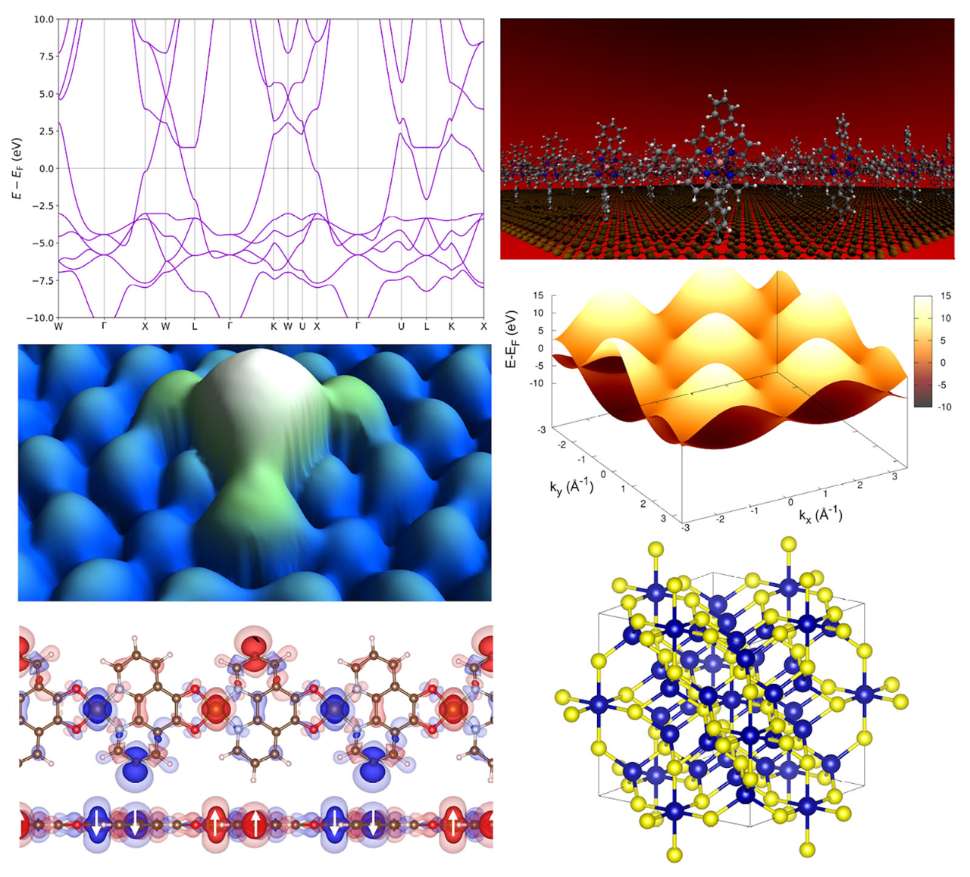Electronic structure simulation & materials modelling
Electronic states of materials
To understand properties of materials and reactions at surfaces, we complement our spectromicroscopy data with ab initio simulations using high-performance computing together with a suite of theoretical methods. Extensive developments in density functional theory (DFT), many-electron wave function theory and graphics processing unit (GPU) technology have made it possible to accurately predict bulk crystal structures and surface morphologies. Our simulation capabilities include:
- Spin-polarised electronic band structures
- Atomic orbital-projected electronic density of states (DOS)
- ARPES photoemission intensity momentum maps
- Scanning tunnelling microscope (STM) profiles
- Fermi surfaces
- Band-resolved electronic orbitals
- Surface work functions
- Vibrational frequencies of molecules and solids
- Magnetic ordering in materials
- Free energies of reactions at surfaces
High-performance computing at Flinders
Electronic structure simulations are carried out using Flinders University’s DeepThought High-Performance Computer, which is equipped with Nvidia Tesla V100 GPUs, AMD EPYC processors, and several materials simulation packages, including:
- VASP 6
- Gaussian16 (coming soon!)
- LAMMPS
- GPAW (coming soon!)
Contact

Clockwise, from top-left: Electronic band structure of gold within the first Brillouin zone; metal-organic catalysts immobilised on a carbon electrode for CO2 reduction; electronic band structure of the pi-electrons of graphene from tight-binding theory; predicted bulk crystal structure of the Co9S8 cobalt pentlandite; electron density plot of a spin-chain showing antiferromagnetic ordering; scanning tunnelling microscopy (STM) simulation of hydrogen adsorbed on graphene.
Our equipment is funded by:



![]()
Sturt Rd, Bedford Park
South Australia 5042
South Australia | Northern Territory
Global | Online
CRICOS Provider: 00114A TEQSA Provider ID: PRV12097 TEQSA category: Australian University








